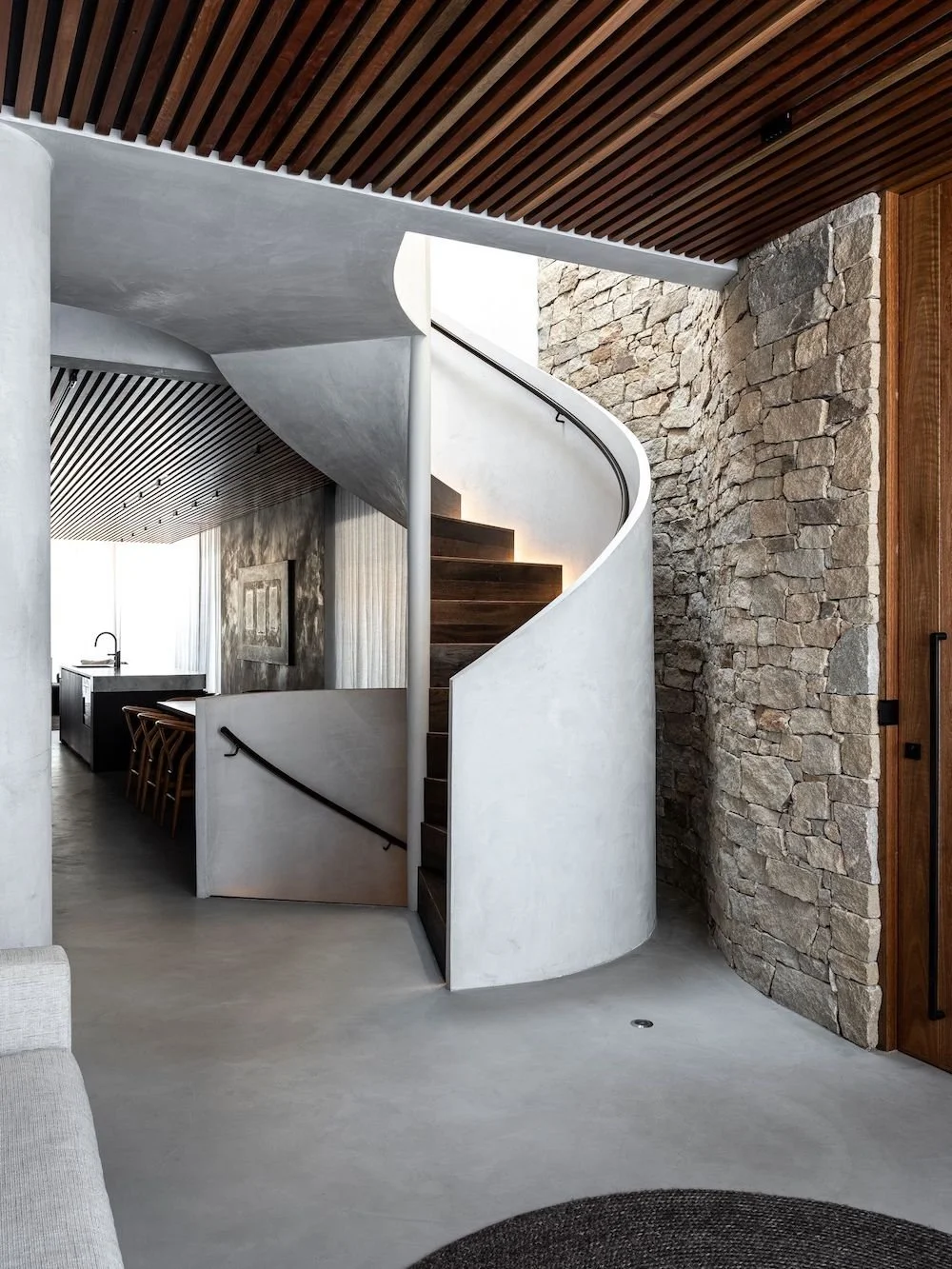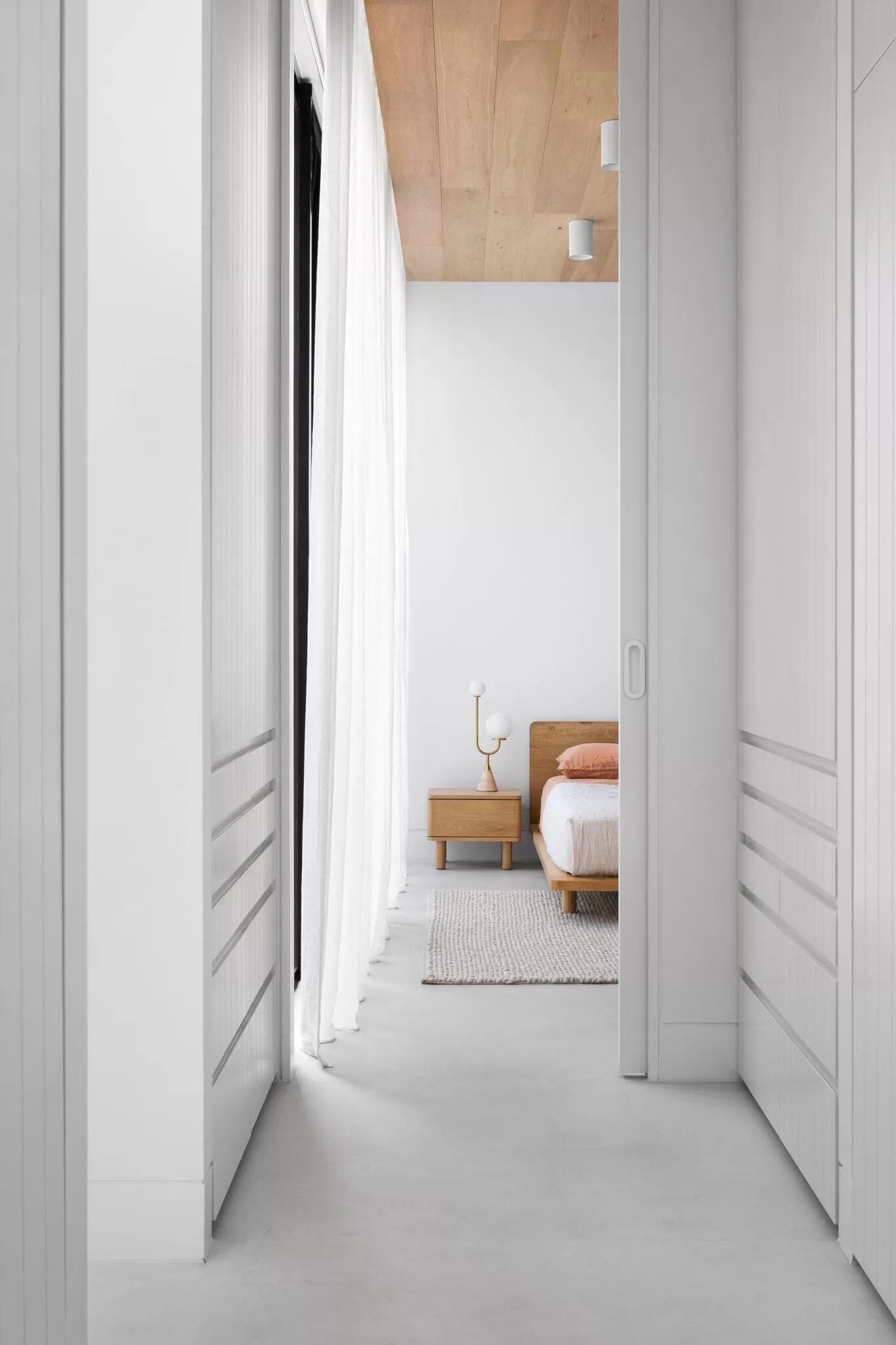
Microcement Floors
SEMCO Surfaces: The USA’s Leading Microcement Flooring Experts
Microcement is an adaptable surface overlay that can be used on both interior and exterior floors, making it ideal for a wide range of applications, including bathrooms, kitchens, commercial spaces, retail stores, outdoor pavements and terraces.
We brought the SEMCO X-Bond Microcement to the US market 30 years ago. Since then, microcement has become a staple in modern design projects around the world. This versatile and durable material is now favored for creating both practical and visually appealing surfaces that stand the test of time.
Let’s dive deeper into the benefits of microcement flooring, its various applications, the different options in our range, and essential maintenance tips.
← Back to our Microcement Hub
What is microcement?
Made from cement and adhesive latex polymers, microcement is a surface coating that’s seamlessly applied by hand over almost any pre-existing hard surface.
The Reasons to Choose a Microcement Floor
Microcement goes beyond being a simple decorative layer; it also offers outstanding performance benefits. Here are some of the factors that make microcement a modern surface solution for all your needs.
-
Easily waterproofed, sealed for lasting protection, UV-stable, and just as strong as concrete; X-Bond in particular is one of the most versatile floor coverings as it can be used on interior and exterior floors (unlike other microcements on the market).
-
As microcement is applied at an ultra-thin layer at only 1/8” thick, it won’t significantly alter the load-bearing capacity of the underlying substrate, and won’t raise the floor level during renovations.
-
A big reason microcement has become so popular is because it can be applied straight on top of existing substrates, even if they’re damaged. You don’t need to demolish your old floors before resurfacing with microcement, which makes remodelling a much faster and cleaner process.
-
Installed by hand as a continuous pavement, microcement flooring won’t feature any expansion joints or grout. The seamless aesthetic is not only visually appealing, but means no more scrubbing stubborn grout. Resurfacing bathroom tiles is one of the most common used for microcement.
-
Microcement is most commonly used to replicate concrete, but comes in a variety of other texture and color options to achieve near endless design outcomes — including the possibility to create your own custom shade. X-Bond has been featured in many award-winning projects and well-known design publications such as Architectural Digest and Grand Designs.
Are Microcement Floors Durable?
SEMCO engineers have specially formulated X-Bond Microcement for outstanding durability. When installed and maintained according to our guidelines, X-Bond Microcement will last for decades.
Excellent temperature regulation. Microcement has excellent thermal resistance, able to resist cracking as the substrate underneath moves in extreme heat or cold — unlike traditional concrete. It can also be applied straight over existing concrete with underfloor heating.
Resistance to de-lamination. Something that sets X-Bond apart from other microcements is its high resistance to de-lamination, due to the advanced molecular bonding properties of added latex polymer. This is why it’s fast becoming the microcement product of choice for high-traffic areas like retail stores, residential flooring, hospitality and commercial spaces across the globe.
Low-maintenance. X-Bond Microcement flooring doesn’t require intense maintenance, highly resistant to wear and tear and finished with a SEMCO sealer to ensure lasting protection against stains. An internal X-Bond Microcement floor just needs to be swept with a broom or a clean microfiber dust mop. Externally, you can just hose it down with a regular garden hose.
Microcement Flooring Applications
Microcement flooring is incredibly versatile and can be installed anywhere throughout the home inside and out; including kitchens, bathrooms, dining areas, and all external areas like garden paths, pools, balconies, and porches.
Beyond residential spaces, microcement is also a popular choice in high-traffic commercial environments, like retail stores, office buildings, schools and universities, public works, and hospitality establishments like hotels, casinos, restaurants, and cafés.
It can be applied directly on top of nearly any pre-existing solid surface, such as concrete, tiles, compressed sheeting, plaster, villa board, brick, plywood, laminate, and MDF.
Microcement can even be used to resurface damaged floors and in all types of wet areas. In these cases, the area is prepared with the SEMCO anti-fracture and waterproofing product, Liquid Membrane, before the microcement is applied.
Liquid Membrane: Microcement’s Best Protection
Liquid Membrane uses the most advanced surfacing technology to provide lasting protection against water damage, leaking, and cracking. This water-based formula is applied prior to installing X-Bond Microcement to stabilise and waterproof your flooring. It can:
Repair cracks in the existing substrate.
Prevent future cracks from natural building settlement.
Fully waterproof your flooring.
Fix leaks in your old flooring before resurfacing it with X-Bond.










